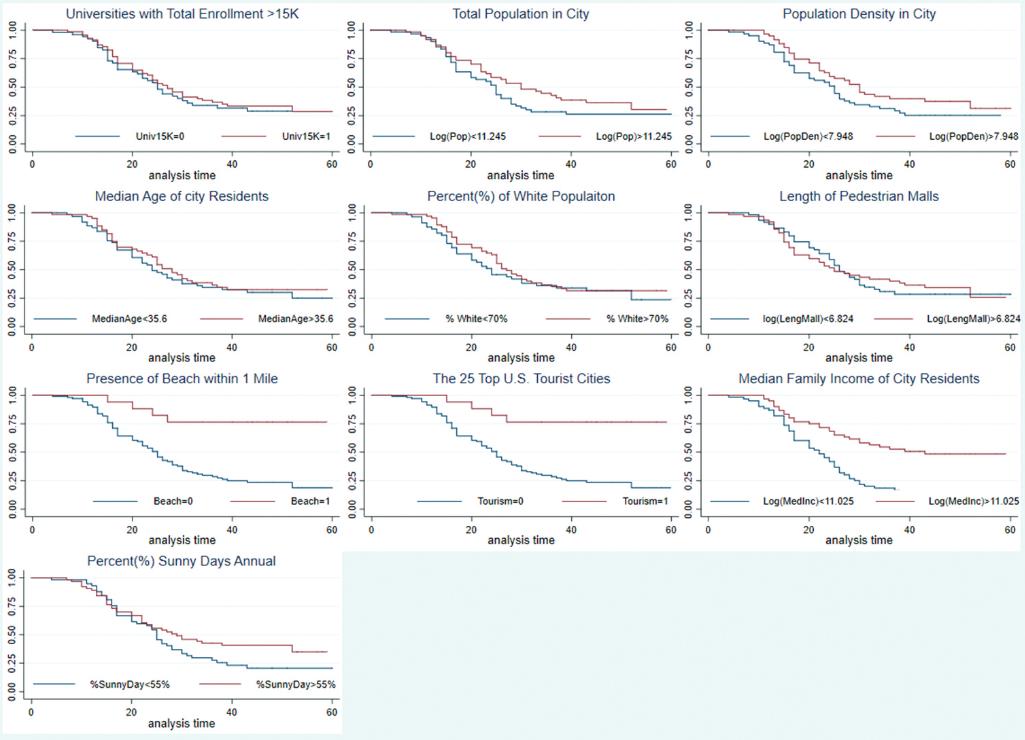The rise and fall of the American pedestrian mall
Published in Journal of Urbanism, 2021

This research provides a historical analysis of the American experiment with pedestrian malls. Specifically, we ask why some pedestrian malls have failed and were reopened to vehicular traffic while others have succeeded. Over 120 post-war malls from across the United States are statistically analysed, examining the relationship between the mall’s lifespan and a variety of geographic, demographic, and economic factors. Using a Cox proportional hazard model, we find that cities’ population density, the median age of the residents, the percent of the population that is white, proximity to beach, whether or not the City is a tourism destination, length of the mall, and the percent of sunny days are all significant in explaining a pedestrian mall’s longevity. In addition, we also examine qualitative, design-based characteristics in order to better understand why certain pedestrian malls, despite their locational disadvantages, have thrived to the present day.
Recommended citation: Matuke, S., Schmidt, S., & Li, W. (2021). The rise and fall of the American pedestrian mall. Journal of Urbanism: International Research on Placemaking and Urban Sustainability, 14(2), 129-144. http://wenzhengli-etal.github.io/files/JOU.pdf
